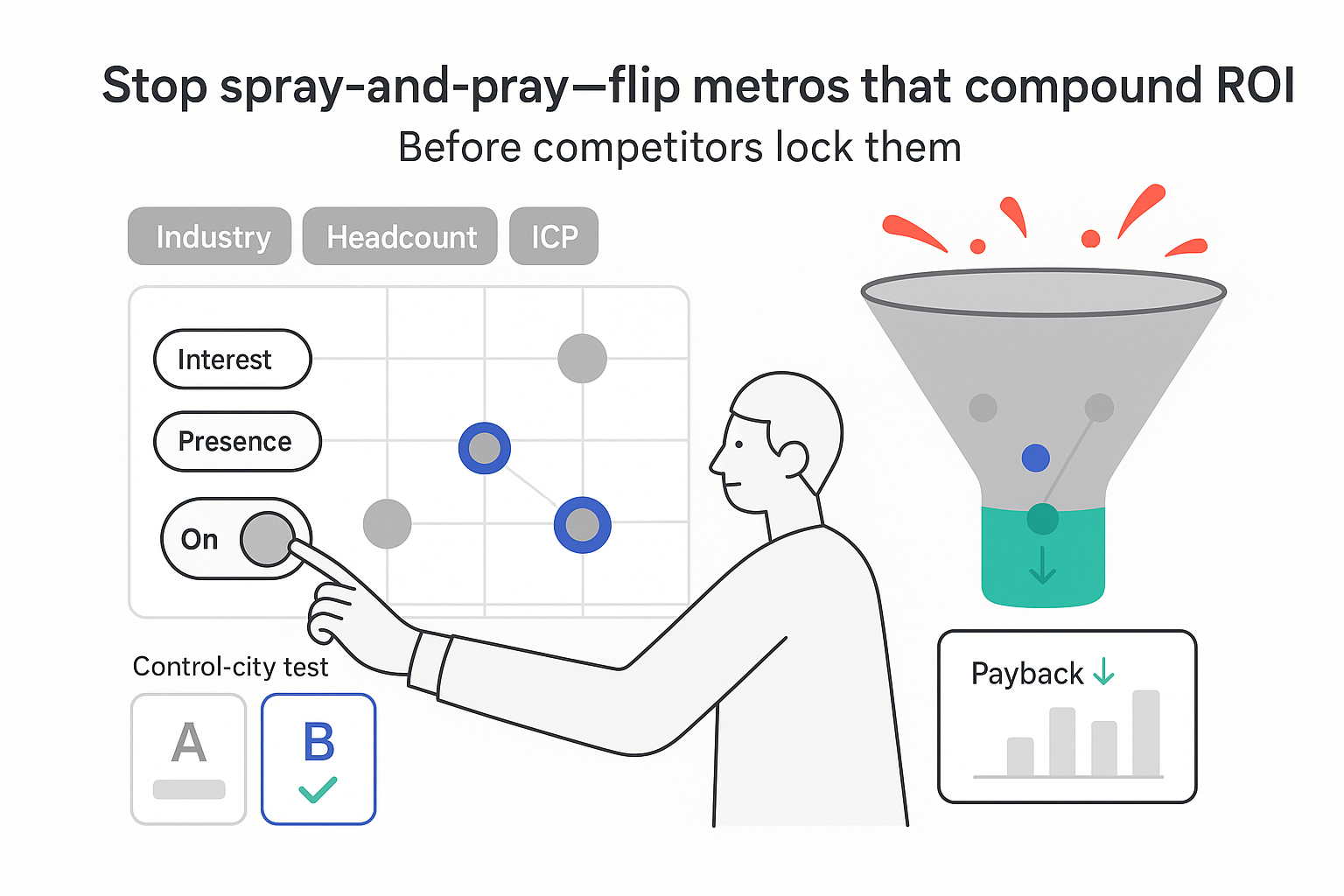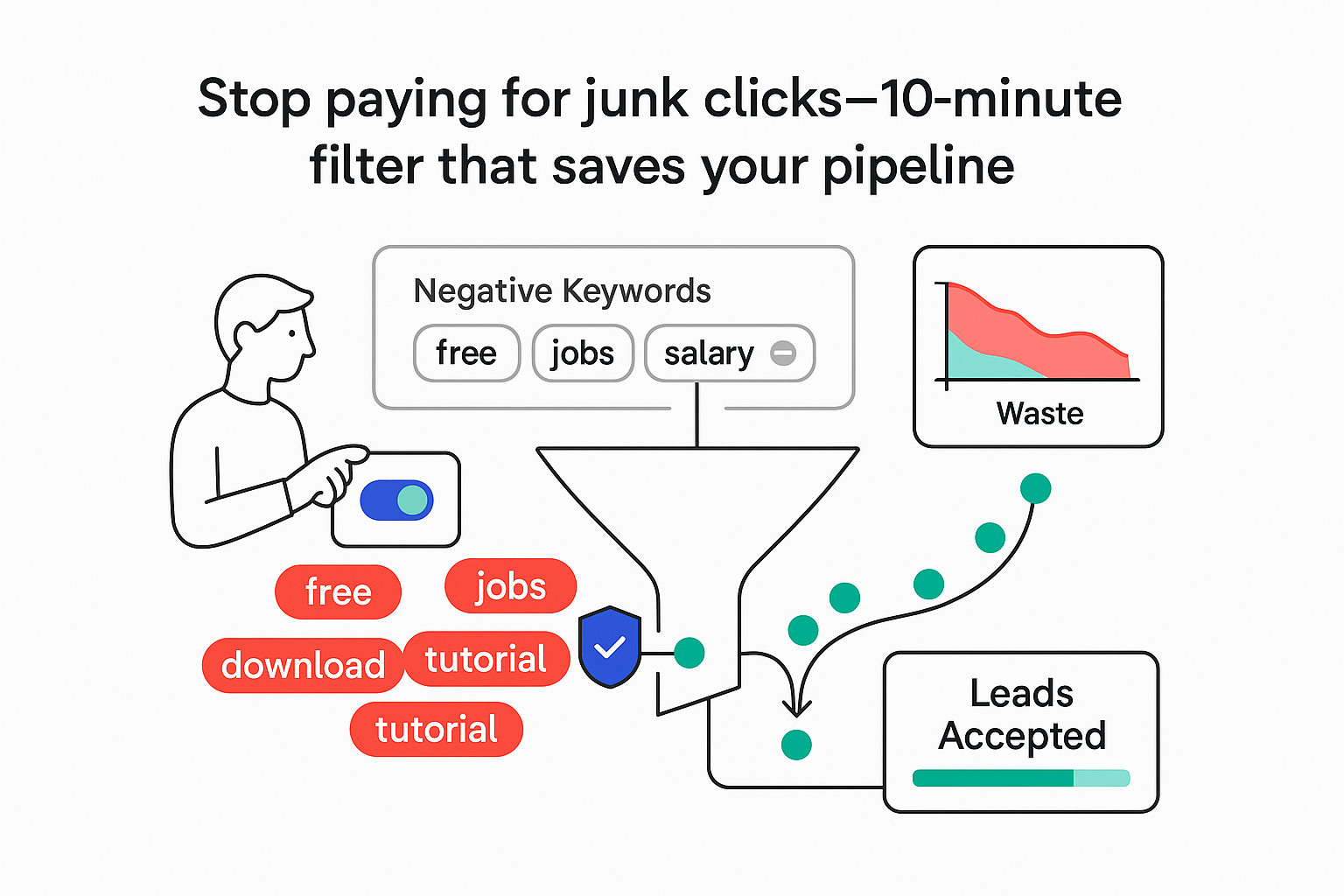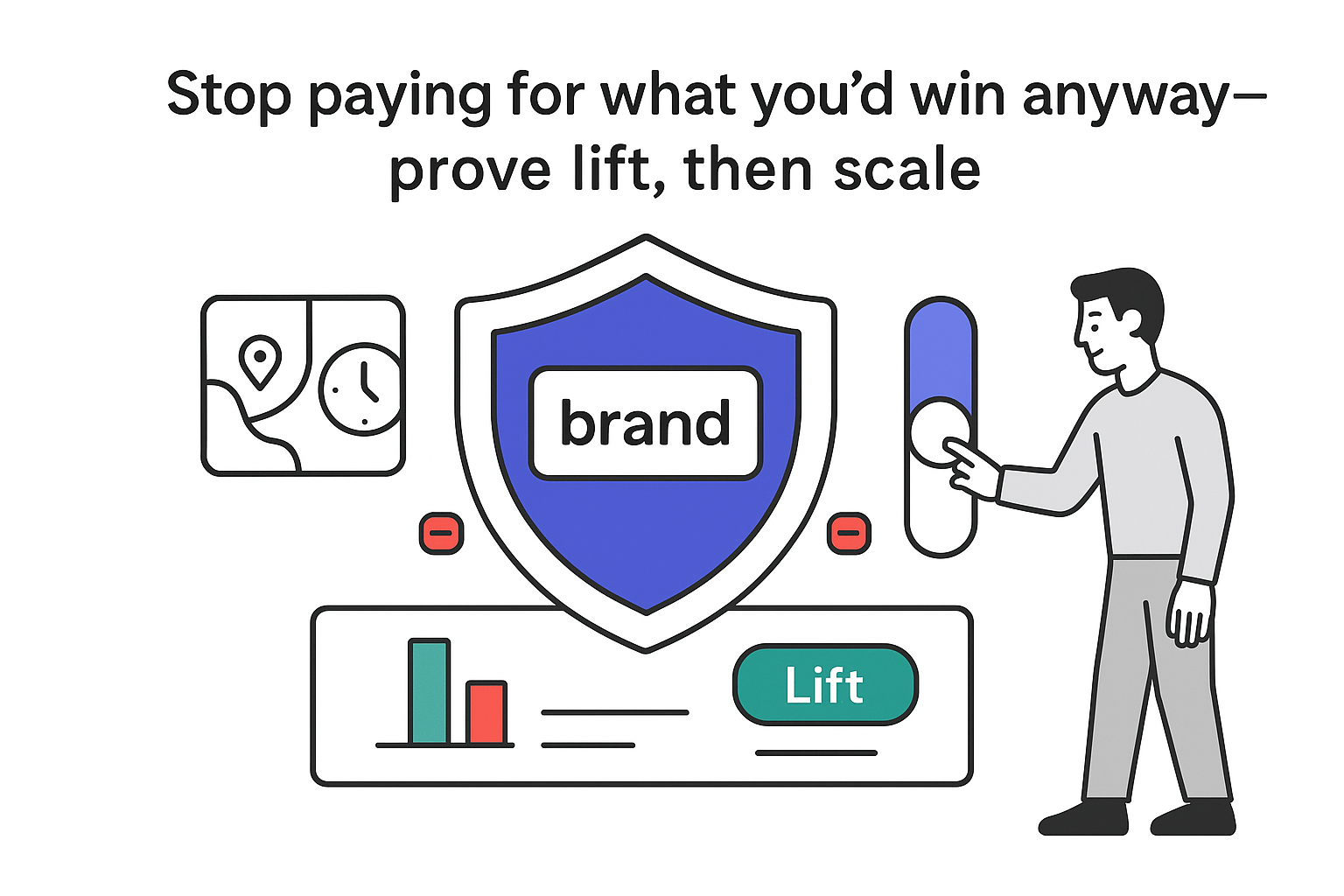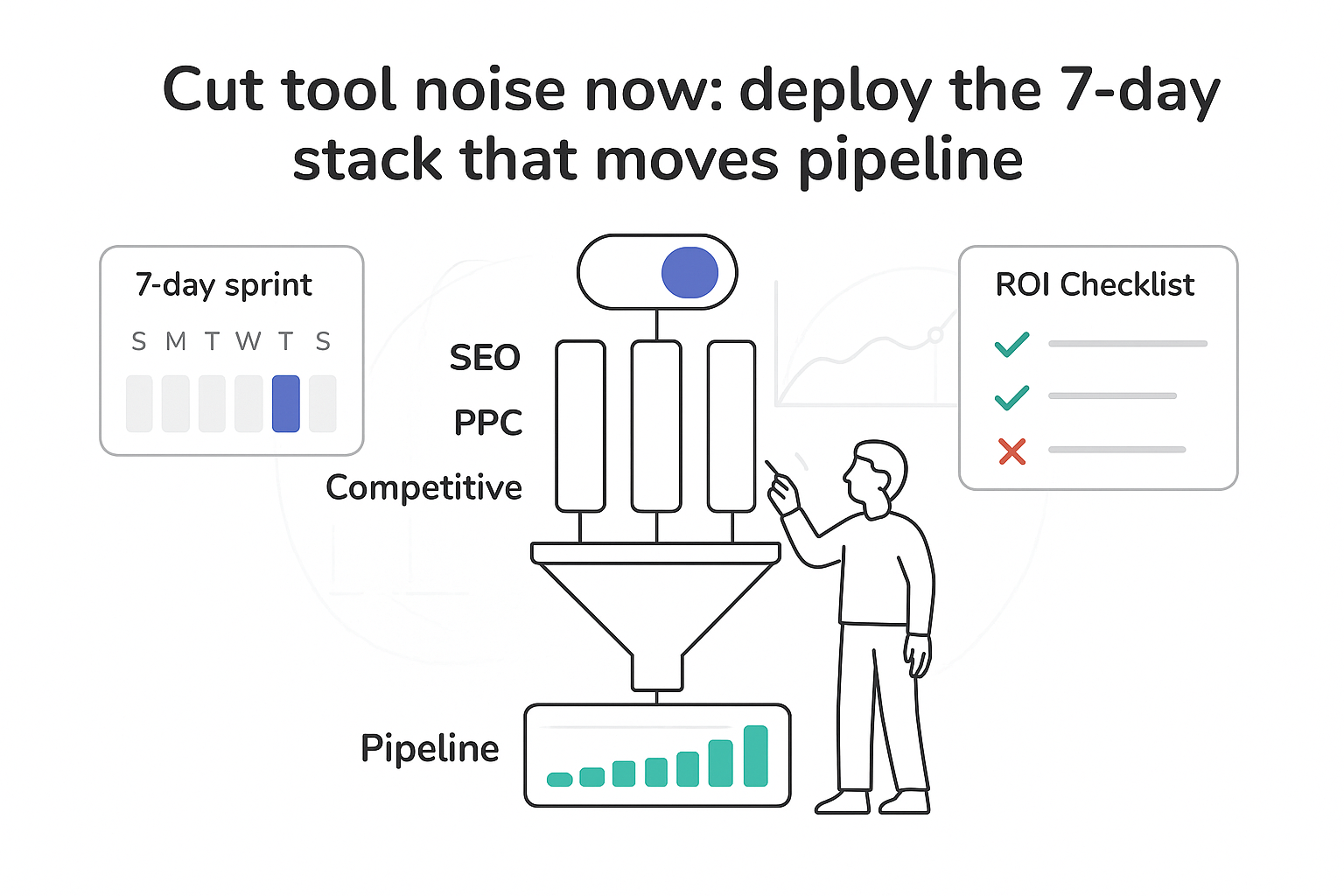Growth that keeps paying me back beats campaigns that fade. For B2B service leaders, evergreen content is the quiet top performer on a site. It answers buyer questions every day, trims acquisition costs, and nudges SQLs forward while I focus on deals that matter.
Evergreen content ROI
Evergreen content lowers CAC, grows SQL volume, and strengthens pipeline over time. Because it solves stable problems in a market, it works month after month without the spike-and-fade pattern of trend content.
Here’s a simple ROI model I use to sanity-check the math:
- Inputs: ACV (average contract value), close rate, SQLs per month, time to value.
- Outputs: 12-month payback, content cost recovery, net pipeline impact.
Sample model (directional, not a forecast):
- ACV: 40,000 dollars
- Close rate: 25 percent
- SQLs per month from a single evergreen page (months 3-12): 2 to 6
- Wins per year from that page: 5 to 15
- Revenue influenced: 200,000 to 600,000 dollars
Assume content build and maintenance costs of 6,000 to 12,000 dollars for a top-tier evergreen asset. A 12-month payback is usually reached after 1 to 2 wins.
Quick math you can adapt:
- Expected wins/year = (monthly SQLs × 10 months × close rate)
- Influenced revenue = (expected wins/year × ACV)
- Payback period (months) ≈ (content cost) ÷ ((ACV × close rate × monthly SQLs) ÷ 12)
Timeline expectations (ranges vary by domain authority, crawl frequency, and competition):
- Quick wins in 30 to 60 days by refreshing high-intent pages already on page 2 or slipping from the top 3. Expect higher CTR, better snippets, and a few fast SQLs.
- Compounding growth in 6 to 12 months as hubs mature, internal links settle, and backlinks accumulate. Expect more durable rankings and more predictable lead flow.
Mini case snapshot:
- A B2B services site refreshed a three-year-old “cloud migration checklist” page. In 90 days: traffic up 118 percent, 12 new top 10 keywords, average position from 14.2 to 6.8, and 17 additional demo requests attributed over 60 days. No ad spend added.
Sources to calibrate expectations: Animalz has long documented “compound” content growth curves; Ahrefs’ ranking studies show most pages take months to accelerate; and Google’s core updates continue to emphasize helpful, people-first content and E-E-A-T signals.
What is evergreen content
Evergreen content stays relevant and useful for a long time - often years. In B2B, it looks like reliable guides, templates, frameworks, and comparisons that map to enduring buyer pain rather than the news cycle. Trend posts about launches or regulatory rumors spike fast and fade just as quickly.

Core attributes I look for:
- Timeless intent: the question won’t change next quarter.
- High utility: it helps someone do a job, not just think about it.
- Update-friendly: I can refresh stats or steps without a rewrite.
- Durable search demand: volume stays steady or grows slowly.
- Buyer-journey alignment: it attracts the right people at the right stage.
Seasonal or fast-decay topics can still help with brand reach, but they don’t compound like evergreen content. Think of them as seasoning, not the meal.
Funnel intent examples:
- TOFU (educational): how to audit vendor risk; SOC 2 vs ISO 27001; marketing attribution glossary.
- MOFU (comparison): agency vs in-house for paid media; cloud cost control frameworks; build vs buy calculators.
- BOFU (decision): RFP templates; implementation checklists; integration requirements; migration timelines.
Common evergreen content types (pick what matches your ICP and intent):
- Glossaries: a “B2B attribution glossary” that links to deeper articles; often prompts readers to explore more detailed explanations.
- Pillar pages and hubs: an “Account-Based Marketing strategy” hub with spokes on targeting, orchestration, and reporting; strong internal links to related deep dives and case studies.
- Frameworks: a 6-step procurement governance framework; link to methodology and real-world examples.
- Checklists: a “Salesforce org cleanup checklist”; readers often move to deeper scoping guides after use.
- Templates: a “Stakeholder mapping template” in Google Sheets; link to a methodology page and related how-to content.
- Calculators: a “Paid search CAC calculator” using CPC, CVR, and AOV inputs; surface relevant benchmarks and explainer pieces.
- How-to guides: “How to build a keyword map in Semrush and GSC”; connect to a deeper planning guide.
- Comparisons, vs, and alternatives: “HubSpot vs Marketo for mid-market B2B”; link to migration considerations and integration articles.
- FAQs: “Vendor security assessment FAQ for SaaS buyers”; link to compliance and security explainer content.
- Case studies with long shelf life: “Cutting cloud spend by 28 percent for a global MSP”; interlink to approach and methodology pages.
- Industry benchmarks: “B2B conversion rate benchmarks by channel”; link to CRO frameworks and analytics explainers.
A note on conversion paths: each type should point to a logical next step - often a deeper guide, a case study, or a methodology explanation - so the journey feels natural rather than pushy.
Why evergreen content is essential
- Sustainable organic traffic: it maps to stable intent, so it keeps pulling qualified visitors month after month.
- Compounding backlinks: useful resources earn links over time, lifting authority and rankings in a flywheel. > Digital PR for SEO: Backlinks, authority, and rankings > What is link equity and why does it still matter?
- Alignment with Google’s focus on helpful content and E-E-A-T: clear authorship, first-hand methods, and citations help pages stand out across core updates.
- Topical authority: cover a subject in depth and your site becomes a trusted resource for that theme.
- CAC reduction over time: one strong page can assist dozens of SQLs without constant spend.
- Internal linking and repurposing: pillars feed spokes; spokes reinforce pillars; every new page strengthens the network.
When I tie this to core metrics - more high-intent visits → more SQLs → more opportunities - paired with a healthy close rate and solid ACV, the revenue curve smooths out. Proof mechanics that consistently build trust include expert bylines, SME quotes, named data sources, and transparent methodology sections.
Evergreen content opportunities
I use this sequence to find topics that last and perform:
- Map ICP pains and jobs to be done. Pull from sales calls, loss reasons, and procurement checklists. Focus on chronic problems, not passing frustrations.
- Run keyword research with evergreen modifiers. Think framework, checklist, template, standards, compliance, best practices, ROI, calculator, guide, vs, alternatives. Tools like Ahrefs or Semrush, GSC, and AlsoAsked surface stable phrasing and related questions.
- Check SERP stability. Use Google Trends and rank history to see whether top results hold steady. Spot volatile intent shifts early.
- Score traffic and business value. Pair demand with a value score that reflects intent, ACV fit, and sales-cycle impact. A lower-volume keyword with buyer intent often beats a high-volume curiosity query.
- Do a content gap analysis. Compare your coverage to high-ranking pages. Note missing sections, schema types, and assets like calculators or templates.
- Do an internal link gap analysis. Identify related pages that could send or receive links for topic clustering. Check orphan pages in your crawl data.
- Flag quick-win refresh candidates. In GSC, filter by high impressions and low CTR or positions 6-20. These are ideal for a 30-60 day bump.
- Prune and merge where it helps. If three thin posts cover the same topic, consolidate into one evergreen asset, 301 the old URLs, and keep the one that best matches intent. The Wayback Machine can help recover useful sections.
Document picks in an opportunity matrix that weighs impact against effort. Start with items that score high impact and medium effort.
Evergreen content strategy
I turn opportunity into assets with a tight playbook:
- Build a content moat. Pick topics where I have unique experience, data, or process depth that others can’t easily copy.
- Do deep, original research. Run quick surveys, interview SMEs, analyze anonymized data, quote sources, and cite dates. This is how evergreen content earns links and stays fresh.
- Create content worth returning to. Add templates, calculators, decision trees, and examples. Break long guides with jump links so scanning is easy.
- Optimize for long-term discoverability. Map search intent, build semantic clusters with related subtopics, use clean URLs, apply schema like FAQ, HowTo, and Article, and include TOC jump links. Clear headings make crawling and reading easier. > Your guide to sitemaps
- Build internal links and conversion paths. Design hub-and-spoke structures. Link top-of-funnel pieces to mid and bottom pieces. Use light prompts such as related case studies and how-it-works explainers that fit the page’s intent.
- Monitor and iterate. Track rankings, CTR, dwell time, scroll depth, backlinks, and conversions. Adjust based on what users actually do rather than what I assume.
Sample brief outline for a pillar:
- H1: Cloud Cost Optimization Guide
- Intro: why waste hides in contracts, architecture, and dashboards
- Section 1: cost drivers explained with formulas
- Section 2: quick-win checklist for 30-day savings
- Section 3: architecture patterns by scenario
- Section 4: calculator inputs and example outputs
- Section 5: case summaries and links
- FAQ schema block answering common procurement questions
- Internal links to detailed guides, case studies, and benchmark reports
Sample hub architecture:
- Pillar: cloud cost optimization
- Spokes: rightsizing EC2, storage tiers, contract negotiation, tagging policy, alerting setup
- Support: calculator, glossary, case studies, template library
- Links: spokes link to pillar and to each other where relevant; pillar links to related resources and case studies
Evergreen content maintenance
Evergreen content still needs care. I set a refresh cadence and define triggers so updates are predictable, not chaotic.
Cadence:
- Core pillars and calculators: quarterly review
- Supporting pages and spokes: twice per year
- Glossaries and definitions: rolling updates as terms change
Triggers:
- Rank drop of two or more spots over a month
- CTR decline compared to prior 90 days
- Outdated stats or screenshots
- Significant changes to standards or compliance rules
- New buyer questions showing in GSC queries or PAA boxes
Maintenance checklist:
- Validate that search intent still matches the page
- Update stats, dates, and citations; add new examples with sources
- Expand sections that answer relevant People Also Ask questions
- Add new internal links from fresh content; revisit anchor text for clarity
- Fix broken links, compress heavy media, and check Core Web Vitals
- Add expert quotes or new data to strengthen E-E-A-T signals
- Review author bio and credentials for clarity
- Check for cannibalization; merge overlapping posts into the strongest evergreen asset, then 301 the rest
- Update schema and revalidate in Rich Results Test
- Log changes with a visible “last updated” date and an internal change log so I can connect ranking shifts to edits
If the update is substantial, republishing with a fresh date can help. Keep the URL stable, especially if it holds links.
Evergreen content examples
Example 1, cybersecurity services
- Topic: SOC 2 readiness checklist
- Intent: MOFU to BOFU
- On-page elements: jump links, downloadable template, FAQ schema, clear author bio with audit experience
- Internal links: from glossary terms and a SOC 2 overview guide, out to deeper implementation resources
- Results: 450 to 1,900 monthly visits in 6 months; 28 SQLs influenced; 7 closed with ACV above 60,000 dollars
Example 2, revenue operations consultancy
- Topic: HubSpot vs Salesforce for mid-market B2B
- Intent: MOFU comparison
- On-page elements: feature table, calculator for estimated total cost by scenario, SME quotes, citations to pricing pages
- Internal links: migration case studies, integration guides, and process breakdowns
- Results: 32 top-10 keywords, 14 backlinks from blogs and podcasts, 11 SQLs in quarter two
Example 3, managed cloud provider
- Topic: AWS cost optimization framework
- Intent: TOFU to MOFU
- On-page elements: framework diagram, embedded calculator, code snippets for tagging, FAQ schema
- Internal links: spoke articles on storage, compute, and contracts, plus deep-dive auditing guides
- Results: 3.1× traffic lift year over year; 19 percent higher assisted conversions in the pipeline
Example 4, AI automation agency
- Topic: RFP template for process automation projects
- Intent: BOFU
- On-page elements: editable template, scoring rubric examples, byline with procurement background
- Internal links: case studies and a delivery playbook
- Results: 22 percent form submit rate on qualified traffic; 9 wins tied to the page within 10 months
Example 5, compliance advisory
- Topic: data retention policy guide by industry
- Intent: TOFU to MOFU
- On-page elements: industry sections, standards references, update log, author credentials
- Internal links: industry-specific implementation resources and risk-assessment explainers
- Results: featured snippet for “data retention policy by industry,” ~1,200 monthly visits, steady flow of qualified calls
Before vs after refresh, B2B analytics firm
- Before: “Marketing attribution models explained” at position 12; thin examples; no schema; last updated two years ago
- Refresh actions: added current screenshots; covered U-shaped and custom models; included a CSV template; added FAQ schema; linked to a calculator and a case study; improved titles and H2s; added an author bio with analytics certifications
- After 60 days: position 3; CTR from 1.8 percent to 6.4 percent; 3 new backlinks; 9 SQLs influenced
Headline pattern starters I keep handy:
- The [Role] Guide to [Outcome] Without [Common Waste]
- [Software] vs [Software] for [ICP] in [Year]
- The [Framework] for [Job To Be Done]
- [Industry] Benchmarks for [Metric] You Can Actually Use
- [Compliance Standard] Checklist With Examples by Department
- How to Calculate [Metric] With Real Inputs and a Simple Model
- [Template] for [Task] That Survives Procurement Review
About the author
I’m a B2B SEO strategist who has led long-form content programs for service firms across North America and the UK. I’ve spent five-plus years in organic growth, with a focus on turning content into pipeline. I collaborate with SMEs in security, cloud, and RevOps, and I believe in building evergreen content that keeps working while I sleep.







.svg)